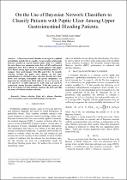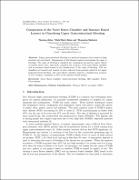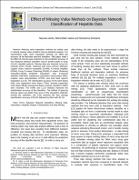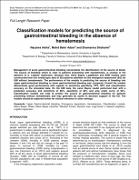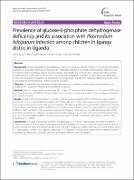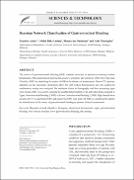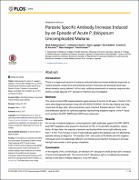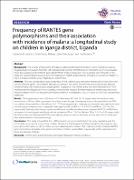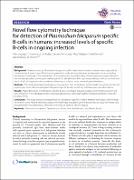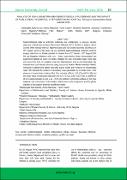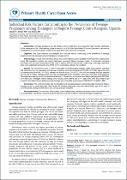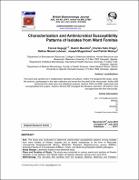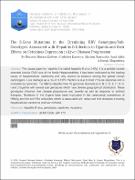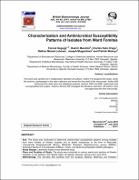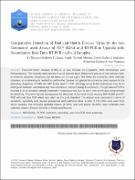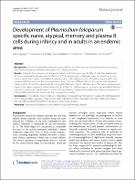Browsing Research Papers by Issue Date
Now showing items 1-20 of 57
-
On the Use of Bayesian Network Classifiers to Classify Patients with Peptic Ulcer Among Upper Gastrointestinal Bleeding Patients
(IEEE, 2012)A Bayesian network classifier is one type of graphical probabilistic models that is capable of representing relationship between variables in a given domain under study. We consider the naïve Bayes, tree augmented naïve ... -
Comparison of the Naive Bayes Classifier and Instance Based Learner in Classifying Upper Gastrointestinal Bleeding
(MATEMATIKA, 2013)Upper gastrointestinal bleeding is a medical emergence that results in high medical costs and death. Management of this disease requires ascertaining the cause of bleeding. The cause of bleeding is classified into esophageal ... -
Effect of Missing Value Methods on Bayesian Network Classification of Hepatitis Data
(International Journal of Computer Science and Telecommunication, 2013-06)Missing value imputation methods are widely used in solving missing value problems during statistical analysis. For classification tasks, these imputation methods can affect the accuracy of the Bayesian network classifiers. ... -
Classification models for predicting the source of gastrointestinal bleeding in the absence of hematemesis
(Basic Research Journal of Medicine and Clinical Sciences, 2013-08)Management of acute gastrointestinal bleeding necessitates the identification of the source of bleed. The source of bleeding which is clear in patients presenting with hematemesis, is unclear in the absence of it. Logistic ... -
Malariometric indices from Iganga, Uganda: baseline characterization in preparation of GMZ2 vaccine trial
(2014)Background: Malaria still remains the leading cause of childhood morbidity and mortality in Uganda. Interventions like malaria vaccines which reduce the malaria burden are needed in malaria endemic communities. There is ... -
Prevalence of glucose-6-phosphate dehydrogenase deficiency and its association with Plasmodium falciparum infection among children in Iganga distric in Uganda
(Biomed central, 2014)Background: Glucose-6-phosphate dehydrogenase (G6PD) is a metabolic enzyme involved in the pentose phosphate pathway, its especially important in red blood cell metabolism. Glucose-6-phosphate dehydrogenase deficiency is ... -
Polymorphisms in Plasmodium falciparum Chloroquine Resistance Transporter and Multidrug Resistance 1 Genes: Parasite Risk Factors that Affect Treatment Outcomes for P. falciparum Malaria after Artemether-Lumefantrine and Artesunate-Amodiaquine
(2014)Adequate clinical and parasitologic cure by artemisinin combination therapies relies on the artemisinin component and the partner drug. Polymorphisms in the Plasmodium falciparum chloroquine resistance transporter ( pfcrt) ... -
Bayesian Network Classification of Gastrointestinal Bleeding
(Universiti Putra Malaysia Press (Pertanika Journal of Science & Technology), 2014)The source of gastrointestinal bleeding (GIB) remains uncertain in patients presenting without hematemesis. This paper aims at studying the accuracy, specificity and sensitivity of the Naive Bayesian Classifier (NBC) in ... -
Parasite Specific Antibody Increase Induced by an Episode of Acute P. falciparum Uncomplicated Malaria
(2015)Introduction There is no approved vaccine for malaria, and precisely how human antibody responses to malaria parasite components and potential vaccine molecules are developed and maintained remains poorly defined. In ... -
Frequency of RANTES gene polymorphisms and their association with incidence of malaria: a longitudinal study on children in Iganga district, Uganda
(Bio Med Central, 2015)Background: The severity and outcome of malaria is influenced by host immunity in which chemokines such as Regulated upon Activation, Normal T cell Expressed and Secreted (RANTES) play an important role. Previous studies show ... -
Novel flow cytometry technique for detection of Plasmodium falciparum specific B‑cells in humans: increased levels of specific B‑cells in ongoing infection
(Malaria Journal, 2015)Background: Malaria caused by Plasmodium falciparum is still a major health threat in endemic areas especially for children below 5 years of age. While it is recognized that antibody immunity plays an important role in ... -
Differences in affinity of monoclonal and naturally acquired polyclonal antibodies against Plasmodium falciparum merozoite antigens
(2015)Background: Malaria is a major global cause of deaths and a vaccine is urgently needed. Results: We have employed the P. falciparum merozoite antigens MSP2-3D7/FC27 and AMA1, used them in ELISA, and coupled them in ... -
ANALYSIS OF NON-LINEAR TRANSMISSION OF EBOLA VIRUS DISEASE AND THE IMPACT OF PUBLIC HEALTH CONTROL INTERVENTIONS IN HOSPITAL
(Islamic University Journal, 2015-06)Epidemiological data on infection outbreaks are challenging to analyze, despite improved control interventions Ebola virus Disease (EVD) remains a serious risk in Guinea (West Africa) with 607 reported cases and 406 deaths ... -
Individual risk factors contributing to the prevalence of teenage pregnancy among teenagers at Naguru teenage center kampala, Uganda
(Primary Healthcare: Open Access, 2016)Introduction: Teenage pregnancy and its effects on teen motherhood are among the major societal challenges of the teenagers in the contemporary global community. In a 30 million population 25 percent pregnancy rate ... -
Characterization and Antimicrobial Susceptibility Patterns of Isolates from Ward Fomites
(British Biotechnology Journal, 2016)Aim: The study was conducted to determine antimicrobial susceptibility patterns among isolates from ward fomites at Kiwoko Hospital and to detect resistances in the form of Macrolide Lincosamide StreptograminB (MLSB), ... -
The S-Gene Mutations in the Circulating HBV Genotypes/Sub-Genotypes Associated with Hepatitis B Infection in Uganda and their Effects on Cytokines Expression in Liver Disease Progression
(Global Journal of Medical Research, 2016)The causal agent for hepatitis B is called hepatitis B virus (HBV). It is a partially double stranded circular DNA virus of the family Hepadnaviridae. It has been implicated as the leading cause of hepatocellular carcinoma ... -
Characterization and Antimicrobial Susceptibility Patterns of Isolates from Ward Fomites
(British Biotechnology Journal, 2016)Aim: The study was conducted to determine antimicrobial susceptibility patterns among isolates from ward fomites at Kiwoko Hospital and to detect resistances in the form of Macrolide Lincosamide StreptograminB (MLSB), ... -
Comparative Detection of Foot-and-Mouth Disease Virus by the two Commonly used Assays of NSP ELISA and RT-PCR in Uganda with Quantitative Real Time RT-PCR on Field Samples
(Global Journal of Medical Research, 2016)Foot-and-mouth disease (FMD) is a viral disease of Ungulates; both Artiodactyla and Perissodactyla. The mortality rates are low in adult animals but it affects milk yield and international trade. In endemic countries, ... -
Sexual behavior effect of orally administered crude aqueous extract of Terminalia schimperiana Root in male Wistar rat
(Plant Journal, 2016)The Proximate composition, phytochemical composition and the effect of oral administration of aqueous extract of Terminalia schimperiana root on male wistar rat sexual behavior were determined. The root was collected and ... -
Development of Plasmodium falciparum specific naïve, atypical, memory and plasma B cells during infancy and in adults in an endemic area
(Bio Med Central, 2017)Background: B-cells are essential in immunity against malaria, but which sub-sets of B-cells specifically recognize Plasmodium falciparum and when they appear is still largely unknown. Results: Using the flow cytometry ...

